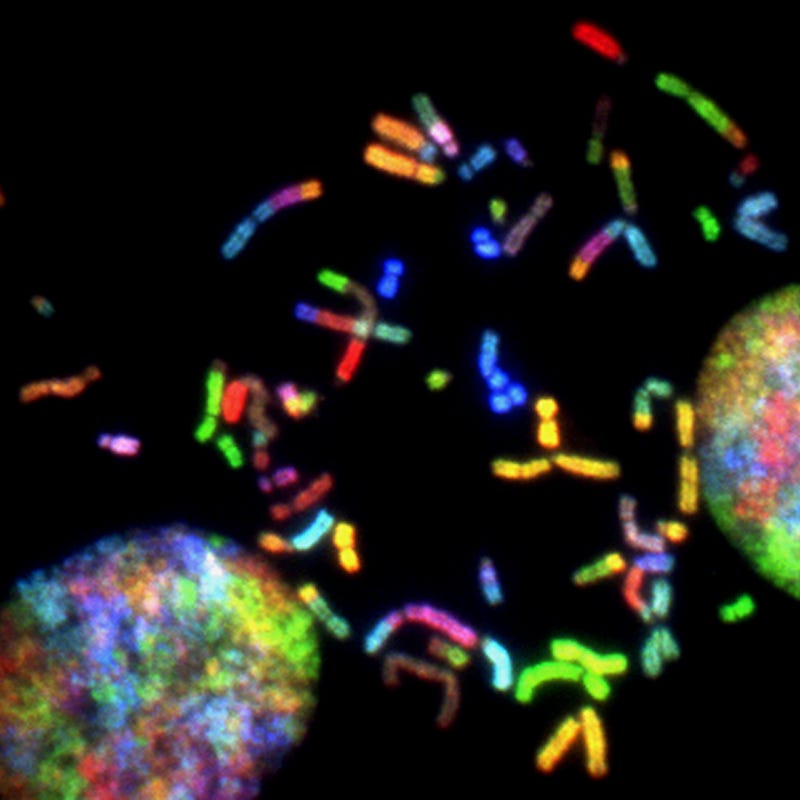# Nanotechnology in Medicine: The Reality Behind James Bond's Nanobots
Written on
Chapter 1: The Concept of Nanomedicine
In the film "No Time To Die," an unseen assassin uses nanobots to target specific individuals. The term "nanobots" is frequently mentioned, seemingly providing a catch-all explanation for the villain's advanced technology. However, in the realm of medical science and engineering, this concept is more accurately described as nanomedicine.
Nanomedicine doesn't imply that doctors shrink down to navigate through our bodies, as depicted in films like "Innerspace," nor does it involve sending miniature robots to eliminate diseases. Instead, it focuses on the meticulous work of scientists developing precise molecules aimed at addressing distinct health issues.
The goal of nanomedicine is to discover optimal molecules that can combat diseases with fewer adverse effects compared to traditional, less-targeted treatments. When we refer to the nanoscale, we're talking about dimensions on the order of one billionth of a meter—nanometers. For perspective, DNA measures approximately 2 nm in width, making it the smallest conceivable pill.

Photo by National Cancer Institute on Unsplash
The term "nanobot" carries a kernel of truth. Rather than mechanical robots, a 'bot' in this context refers to a molecule that autonomously interacts with other biological entities. Thus, a nanobot can be understood as a molecular agent that exerts effects within the body. The creators of "No Time To Die" likely used the term 'nanobot' to connote the malicious technology of the antagonist, while in reality, nanomedicine aims to enhance human health.
Section 1.1: Real-World Applications
Nanomedicine has practical applications in areas such as radiotherapy for cancer treatment. While traditional methods may expose the entire body to ionizing radiation, nanoparticles can mitigate the detrimental biological impacts of radiation exposure. By attaching drugs, proteins, or mRNA to the surface of nanoparticles (a process known as functionalization), the precision of cancer therapies can be significantly improved.
One of the promising advancements in cancer treatment is proton therapy. This innovative technique employs a proton beam that selectively targets cancer cells, minimizing damage to surrounding healthy tissue. The energy of the protons can be adjusted, allowing for tailored penetration depths to irradiate tumors while sparing healthy cells. By using specific nanoparticles that accumulate within tumors, the proton beam can induce chemical reactions that further disrupt tumor cells, enabling lower radiation doses and reducing side effects.
The first video titled "Nanobots #007 #notimetodie #filmreview" explores the role of nanotechnology in the James Bond universe, shedding light on its fictional portrayal versus real-world applications.
Section 1.2: Genetic Targeting with Nanomedicine
In "No Time To Die," the nanobots appeared to read individuals' genetic codes, tailoring their actions to each person's unique DNA. In real-world nanomedicine, researchers can focus on particular genes to combat specific diseases at a molecular level, effectively serving as an on/off switch for gene expression. For instance, cystic fibrosis is linked to a defective gene responsible for a crucial protein's absence in cell membranes. Scientists could potentially design nanoparticles that target the site of these faulty genes, employing transcription factors to activate protein production. Alternatively, other formulations could inhibit genes responsible for producing harmful toxins.
While the potential applications are vast, significant research and funding are essential for these technologies to advance. Additionally, scaling up laboratory successes to mass production presents its own set of challenges.
Chapter 2: Challenges in Production and Future Prospects
The large-scale production of nanomedicines requires meticulous planning from chemical engineers. Techniques effective in a lab setting may not translate well to large-scale manufacturing. For example, nanoparticles can be synthesized using liquids, where factors like agitation speed and mixing duration can greatly influence particle size, potentially rendering them ineffective.
Different applications necessitate distinct properties, such as nanoparticle density or absorption rates in the body. The manufacturing process can substantially affect these characteristics, indicating that each nanomedicine will demand unique production technologies.
The second video, "Nanobots Took off | James Bond | Amrita School of Nanosciences," discusses the scientific principles underlying nanotechnology, emphasizing its relevance to modern medicine.
As we consider the potential of nanomedicine, it's crucial to balance the benefits of targeted therapies against their drawbacks. While this approach promises to refine cancer and disease treatment, some materials may accumulate in the body, possibly causing inflammation. Although a future where nanomedicine is commonplace is still on the horizon, the prospects for drug delivery systems—such as transdermal patches capable of administering medications through the skin—are becoming increasingly feasible.
Another area of focus is the development of advanced antibiotics. As some bacteria evolve resistance to conventional drugs, nanomedicine offers a more precise method for drug delivery, potentially targeting resistant strains effectively. Research is also underway to harness the mobility of bacteria as carriers for drug delivery within the body.
The dedication of healthcare professionals, scientists, and engineers in improving human health often goes unnoticed, overshadowed by fictional narratives like those surrounding spies. Who's to say that nanomedicine isn't quietly aiding spies in recovering from injuries? In an alternate Bond adventure, where 007 suffers an injury and seeks refuge on a remote island, nanomedicine could have played a pivotal role in his recovery, shifting the focus from espionage to groundbreaking medical advancements.
About This Story
This narrative is derived from discussions featured in the podcast "Technically Speaking," which captures the fascinating conversations that scientists and engineers have in the lab, blending scientific facts with imaginative speculation and cultural references. Episodes are released bi-weekly on platforms like Apple, Spotify, Amazon Music, Google, Podbean, and more.
Stay updated on the podcast by following us on Twitter to continue the conversation.